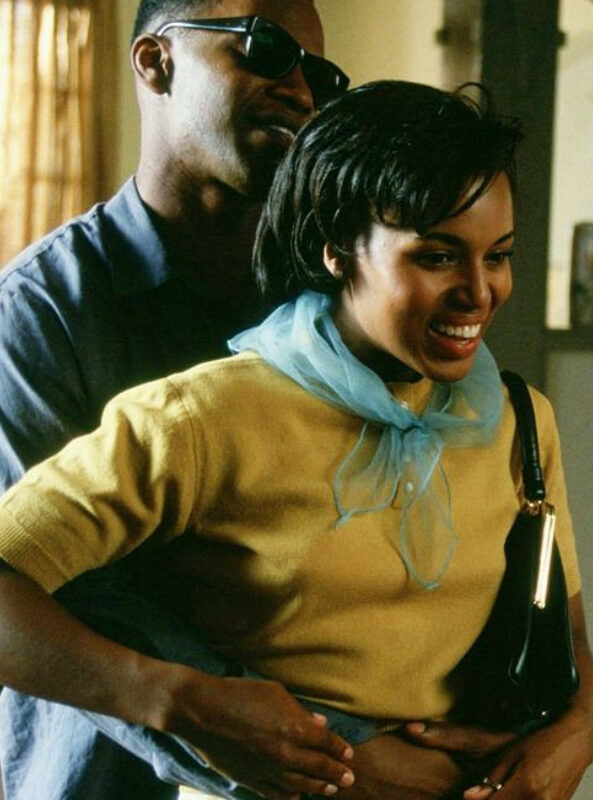Released in 2004, “Ray” stands as one of the most iconic biographical films in cinematic history, showcasing the life and career of the legendary Ray Charles. Jamie Foxx’s portrayal of the musical genius earned him critical acclaim, including an Academy Award for Best Actor. Despite the film’s success, Foxx, in various interviews, has provided insightful analysis on areas where “Ray” could have been enhanced. In this article, we revisit the biopic, examining Foxx’s candid reflections on its strengths and weaknesses, shedding light on the nuanced perspectives of a performer critically examining his own work.
- The Art of Embodying Ray Charles
Jamie Foxx’s transformative performance as Ray Charles is widely regarded as one of the most exceptional portrayals in film history. However, in retrospective interviews, Foxx has shared nuanced insights into the challenges and decisions that shaped his portrayal. He highlights the delicate balance between emulation and interpretation, emphasizing that capturing the essence of such an iconic figure involves a constant negotiation between authenticity and artistic expression.
- Navigating the Complexity of Ray’s Relationships
“Ray” delves into the complex personal life of Ray Charles, exploring his relationships, both romantic and familial. While the film provides a glimpse into the musician’s tumultuous journey, Foxx has suggested that certain aspects could have been more deeply explored. Interviews reveal his thoughts on the challenges of condensing a multifaceted life into a feature film and the inevitable sacrifices made to maintain narrative coherence.
- Musical Mastery: A Deeper Dive into Ray’s Creative Process
One of the film’s undeniable strengths is its celebration of Ray Charles’s musical genius. However, Foxx, a musician himself, has expressed a desire for a more profound exploration of Ray’s creative process. He delves into the intricacies of capturing the essence of Charles’s unique approach to music, from his groundbreaking fusion of genres to the innovative techniques that defined his sound.
- The Evolution of Ray Charles: A Longer Timeline
Foxx has indicated that the biopic’s timeline constraints posed challenges in portraying the full evolution of Ray Charles. The film primarily focuses on a specific period of his life, and while this choice was necessary for narrative coherence, Foxx has hinted at the potential for a more comprehensive exploration. In doing so, the audience might gain a deeper understanding of the forces that shaped Charles into the musical icon he became.
- Humanizing a Legend: Balancing Triumphs and Struggles
“Ray” skillfully captures Ray Charles’s triumphs and struggles, but Foxx reflects on the delicate task of humanizing a legend. While the film touches on Charles’s battles with addiction and personal demons, Foxx acknowledges that a more nuanced portrayal could have provided a fuller picture of the man behind the music. Striking the right balance between admiration and a candid acknowledgment of flaws is a constant challenge when depicting larger-than-life figures.
- The Collaborative Process: Insights from Behind the Scenes
Foxx’s interviews offer glimpses into the collaborative efforts involved in bringing “Ray” to life. He discusses the challenges of working with a diverse team, from fellow actors to the creative minds behind the scenes. Understanding the intricacies of these collaborations provides a unique perspective on the filmmaking process and the collective dedication required to translate a legend’s life onto the silver screen.
- Cultural Impact: Beyond the Biopic
While “Ray” undoubtedly left an indelible mark on cinematic history, Foxx has shared thoughts on its broader cultural impact. He contemplates the ways in which the film contributed to shaping public perceptions of Ray Charles and the responsibilities that come with portraying an influential figure whose legacy extends far beyond the screen.
Conclusion
In revisiting “Ray,” guided by Jamie Foxx’s candid reflections, we gain a deeper appreciation for the complexities inherent in creating a biographical film. Foxx’s insights into the challenges of embodying a musical legend, navigating intricate relationships, and capturing the multifaceted nature of Ray Charles’s life provide a valuable lens through which to view the film.
While “Ray” stands as a testament to the collaborative efforts of a dedicated cast and crew, Foxx’s analysis reminds us that even the most celebrated works are subject to scrutiny and reflection. The ongoing dialogue surrounding the film serves as a testament to the ever-evolving nature of cinematic storytelling and the perpetual quest for more authentic and comprehensive representations of iconic figures.
In the end, “Ray Revisited” invites audiences to not only celebrate the film’s successes but also engage in a nuanced discussion about the artistic choices that shape our understanding of cultural legends. Jamie Foxx’s role as both performer and critic adds layers of complexity to our appreciation of “Ray,” reminding us that even in the realm of acclaimed biopics, there is always room for reflection and growth.



